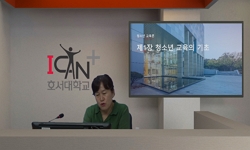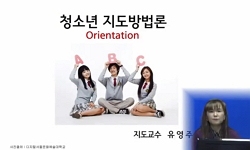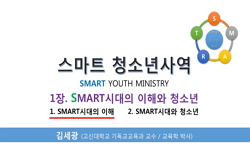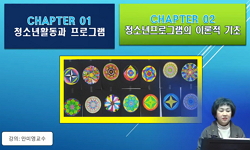본 연구는 중학생이 지각한 가족기능 및 스마트폰 과몰입이 배려에 미치는 영향을 살펴보는 것을 목적으로, 중학생 대상의 배려 향상 프로그램 개발을 위한 기초자료의 제공 및 이를 활용할...
http://chineseinput.net/에서 pinyin(병음)방식으로 중국어를 변환할 수 있습니다.
변환된 중국어를 복사하여 사용하시면 됩니다.
- 中文 을 입력하시려면 zhongwen을 입력하시고 space를누르시면됩니다.
- 北京 을 입력하시려면 beijing을 입력하시고 space를 누르시면 됩니다.
https://www.riss.kr/link?id=T14462574
- 저자
-
발행사항
서울 : 경희대학교 대학원, 2016
-
학위논문사항
학위논문(석사) -- 경희대학교 대학원 , 아동가족학과 가족학전공 , 2017. 2
-
발행연도
2016
-
작성언어
한국어
-
주제어
중학생 ; 청소년 ; 가족기능 ; 스마트폰 과몰입 ; 배려 ; middle school students ; adolescents ; family functioning ; smartphone overindulgence ; care
-
DDC
641-A 판사항(22)
-
발행국(도시)
서울
-
기타서명
The effects of family functioning and smartphone overindulgence perceived by middle school students on car
-
형태사항
[v], 80 p. : 삽화 ; 26 cm
-
일반주기명
경희대학교 논문은 저작권에 의해 보호받습니다.
지도교수: 오윤자
참고문헌: p. 57-67 -
UCI식별코드
I804:11006-200000068496
- 소장기관
-
0
상세조회 -
0
다운로드
부가정보
국문 초록 (Abstract)
본 연구는 중학생이 지각한 가족기능 및 스마트폰 과몰입이 배려에 미치는 영향을 살펴보는 것을 목적으로, 중학생 대상의 배려 향상 프로그램 개발을 위한 기초자료의 제공 및 이를 활용할 수 있는 기회가 마련되는 데에 기여할 것으로 본다.
연구방법과 절차에 있어서 본 연구의 대상은 서울·경기 지역 소재 중학교에 재학중인 중학생 1, 2, 3학년을 대상으로 636명의 자료를 최종분석에 사용하였다. 측정도구는 3가지로서, 가족기능은 김정운(2016)이 개발한 청소년용 가족기능척도로 5가지 하위영역으로 구성된 전체 26문항 4점 리커트 척도이며, 점수가 높을 경우 가족기능이 원활한 것으로 이해할 수 있다. 스마트폰 과몰입은 한국정보화진흥원(2011)에서 개발한 청소년용 자가진단 척도로 4가지 하위영역으로 구성된 전체 15문항 4점 리커트 척도이며, 점수가 높을 경우 스마트폰 과몰입이 높은 것을 의미한다. 배려는 조규판·주희진(2013)이 개발한 청소년용 배려척도로 3가지 하위영역으로 구성된 전체 20문항 5점 리커트 척도이며, 점수가 높을수록 배려수준이 높다는 것으로 이해할 수 있다. 자료분석 방법은 SPSS 20.0 프로그램을 이용하여 첫째, 중학생이 지각한 가족기능, 스마트폰 과몰입, 배려의 경향을 알아보기 위해 빈도분석(Frequency Analysis)과 기술통계분석(Descriptive Statistic Analysis)을 사용하였다. 둘째, 조사대상자의 특성에 따른 중학생이 지각한 가족기능, 스마트폰 과몰입, 배려의 차이를 알아보기 위하여 독립표본 t검정(Independent Samples t-test) 및 일원분산분석(one-way ANOVA)을 사용, 사후검증으로 Duncan`s multiple range test를 실시하였다. 셋째, 조사대상자의 특성, 중학생이 지각한 스마트폰 과몰입 및 가족기능이 배려에 미치는 영향을 알아보기 위하여 위계적 회귀분석(Hierarchical Regression Analysis)을 실시하였다.
본 연구의 주요 결과를 요약하면 다음과 같다. 첫째, 중학생이 지각한 가족기능, 스마트폰 과몰입, 배려의 경향성을 살펴보면, 중학생이 지각한 가족기능의 전반적인 경향은 4점 리커트 척도 상에서 평균 3.15(표준편차 .45)로 하위영역에서 ‘정서지지’, ‘성장지원’, ‘가족화합’, ‘의사소통’, ‘가족갈등’ 순으로 나타났다. 이를 통해 중학생이 지각한 가족기능의 전반적인 경향은 애정과 친밀감을 바탕으로 가족구성원 간에 규칙 및 의사소통이 원활하고 자녀의 성장지원을 위한 물리적 지원 등이 잘 이루어지고 있음을 알 수 있었다. 가족갈등의 경우 대체적으로 비난이나 원망, 책임전가 등 없이 원만한 해결을 하고 있는 것으로 이해할 수 있다. 다음으로 스마트폰 과몰입의 전반적인 경향을 알아본 결과 4점 리커트 척도 상에서 평균 2.00(표준편차 .53)으로 하위영역에서는 ‘내성’, ‘일상생활장애’, ‘금단’, ‘가상세계지향성’ 순으로 나타났다. 이를 통해 중학생이 지각한 스마트폰 과몰입의 전반적인 경향은 스마트폰 사용이 현실세계에 문제를 일으키거나 대인관계를 불편하게 느끼지는 않는 것으로 알 수 있었다. 또한 스마트폰 사용을 중단할 경우 불안감을 느끼지는 않았고 스마트폰 사용을 더 많이 할수록 만족감을 느끼는 내성의 경우 약간 높은 것으로 나타났지만 종합적으로 스마트폰 과몰입은 높지 않은 수준으로 이해할 수 있다. 마지막으로 배려의 전반적인 경향은 5점 리커트 척도 상에서 평균 4.02(표준편차 .66)로 나타났다. 하위영역에서 ‘행동’, ‘정서’, ‘인지’ 순으로 나타나 이는 중학생들은 배려를 구체적인 행동으로 옮기는 반응이 가장 높았고, 상대를 이해와 공감하고 배려가 필요한 상황에 대해 인지하는 수준 또한 높은 것으로 볼 수 있다.
둘째, 조사대상자의 특성(인구사회학적 특성, 개인심리적 특성)에 따른 가족기능, 스마트폰 과몰입, 배려의 차이를 살펴보았다. 구체적으로 조사대상자의 특성에 따른 가족기능의 차이를 살펴보면 인구사회학적 특성은 학년, 지역, 학업성적이 개인심리적 특성은 자기자신만족, 또래관계만족, 스트레스정도에 있어서 통계적으로 유의미한 차이를 나타냈다. 반면, 종교와 성별은 유의미한 차이가 없었다. 다음으로 조사대상자의 특성에 따른 스마트폰 과몰입의 차이를 살펴보면 인구사회학적 특성은 성별, 학년, 지역, 학업성적이, 개인심리적 특성은 자기자신만족, 또래관계만족, 스트레스정도에 있어서 유의미한 차이를 나타냈다. 반면 종교는 차이가 없는 것으로 나타났다. 마지막으로 조사대상자의 특성에 따른 배려의 차이를 살펴보면 인구사회학적 특성에서는 성별, 학년, 지역, 학업성적이, 개인심리적 특성은 자기자신만족, 또래관계만족, 스트레스정도가 유의미한 차이를 나타냈고 종교에서 차이가 없는 것으로 나타났다.
셋째, 조사대상자의 특성, 중학생이 지각한 스마트폰 과몰입 및 가족기능이 배려에 미치는 영향을 살펴보면 먼저, 조사대상자의 특성 중 인구사회학적 특성에서는 성별과 학업성적은 배려의 하위영역 인지, 정서, 행동 배려전체 모두에 영향을 미치는 것으로 나타났고, 지역은 배려의 하위영역 인지, 행동 및 배려전체에 영향을 미치는 것을 알 수 있었다. 개인심리적 특성에서는 또래관계만족이 배려의 하위영역 인지, 정서, 행동, 배려전체에 영향을 미쳤다. 스마트폰 과몰입의 하위영역 중 일상생활장애와 내성은 배려의 인지, 정서, 행동, 배려전체에 영향을 미치는 것으로 나타났고, 금단은 배려의 하위영역 행동에서만 영향을 미치는 것으로 나타났다. 마지막으로 가족기능의 정서지지는 배려 하위영역의 정서, 배려전체에, 가족화합은 배려 하위영역 인지, 행동에, 의사소통은 배려 하위영역 정서, 행동, 배려전체에, 가족갈등은 배려 하위영역 인지, 정서, 배려전체에 유의미한 영향을 미치는 것으로 나타났다. 반면, 종교, 자기자신만족, 스트레스정도, 스마트폰 과몰입 하위영역 중 가상세계지향성, 가족기능의 하위영역 중 성장지원은 배려에 영향을 미치지 않는 것으로 나타났다.
요약하면, 중학생이 지각한 가족기능 및 스마트폰 과몰입은 배려에 비교적 영향을 미치는 것으로 나타났다. 따라서 본 연구는 가족생활주기에 따른 가족기능 강화교육 및 스마트폰 사용교육, 배려 프로그램 개발은 물론 청소년 관련 현장에서의 적극적인 실천이 요구되는 바이다.
다국어 초록 (Multilingual Abstract)
This study aims to investigate the effects of family functioning and smartphone overindulgence perceived by middle school students on care, and it is expected to contribute to providing basic data for development of care improvement programs targeting...
This study aims to investigate the effects of family functioning and smartphone overindulgence perceived by middle school students on care, and it is expected to contribute to providing basic data for development of care improvement programs targeting middle school students and to preparing opportunities of using them.
In the method and procedure, this study targeted the first, second and third year students of middle schools located in Seoul and Gyeonggi, Korea; the data surveyed from 636 students was used for the final analysis. There were 3 kinds of measurement tools: To measure family functioning, the family functioning scale for adolescents developed by Kim Jeong-un(2016) was used. It was the 4-point Likert scale with 26 questions composed of 5 kinds of subdomains; higher scores can be understood smoother family functioning. For smartphone overindulgence, the self-diagnosis scale for adolescents developed by NIA(2011) was used. It was the 4-point Likert scale with 15 questions composed of 4 kinds of subdomains; higher scores mean higher level of smartphone overindulgence. For care, the care scale for adolescents developed by Cho Gyu-pan and Ju Hui-jin(2013) was used. It was the 5-point Likert scale with 20 questions composed of 3 kinds of subdomains; higher scores can be understood higher level of care. For data analysis, using SPSS 20.0 program, first, frequency analysis and descriptive statistic analysis were conducted to find out tendencies of family functioning, smartphone overindulgence and care perceived by middle school students. Second, to find out differences in family functioning, smartphone overindulgence and care perceived by middle school students according to characteristics of research subjects, independent sample t-test, one-way ANOVA and Duncan’s multiple range test as the post hoc test were carried out. Third, to find out the effects of characteristics of research subjects and smartphone overindulgence and family functioning perceived by middle school students on care, hierarchical regression analysis was conducted.
The summarized major results of this study are as follows: First, as for tendencies of family functioning, smartphone overindulgence and care perceived by middle school students, the general tendency of family functioning perceived by middle school students was 3.15 on average on the 4-point Likert scale (standard deviation = .45); subdomains were found in the order of emotional support, support for growth, family harmony, communication and family conflict. Through this, it was found that the general tendency of family functioning perceived by middle school students showed regulations and communication between family members were smooth based on affection and familiarity and the physical support for supporting children’s growth went on well. Family conflict can be understood to be settled amicably without accusation, resentment or buck-passing in general. Next, as a result of finding out the general tendency of smartphone overindulgence, the score was 2.00 on the 4-point Likert scale (standard deviation = .53); subdomains were found in the order of tolerance, disturbance of adaptive functions, withdrawal and virtual life orientation. Through this, the general tendency of smartphone overindulgence perceived by middle school students was found that using smartphones did not make trouble in the real life or make interpersonal relationship uncomfortable. In addition, students did not feel anxiety when stopping using smartphones. Tolerance, which they feel satisfaction when using smartphones more, was found a bit higher, but smartphone overindulgence can be understood not high in general. Lastly, the general tendency of care was found 4.02 on average on the 5-point Likert scale (standard deviation = .66). Subdomains were found in the order of behavior, emotion and cognition, which means that middle school students’ response of putting care into specific behaviors was the highest and that the level of understanding and sympathizing with others and recognizing the situation that needs care can be also understood high.
Second, this study investigated differences in family functioning, smartphone overindulgence and care according to characteristics of research subjects (socio-demographic characteristics and individual psychological characteristics). Specifically, as for the difference in family functioning according to characteristics of research subjects, socio-demographic characteristics were statistically significantly different in the school year, region and school record, while the individual psychological characteristics in self-satisfaction, peer relationship satisfaction and stress level. On the other hand, religion and gender were not significantly different. Next, as for the difference in smartphone overindulgence according to characteristics of research subjects, socio-demographic characteristics were significantly different in gender, school year, region and school record, while individual psychological characteristics in self-satisfaction, peer relationship satisfaction and stress level. On the other hand, there was no difference in religion. Lastly, as for the difference in care according to characteristics of research subjects, socio-demographic characteristics were significantly different in gender, school year, region and school record, while individual psychological characteristics in self-satisfaction, peer relationship satisfaction and stress level. There was no difference in religion.
Third, as for the effects of characteristics of research subjects and smartphone overindulgence and family functioning perceived by middle school students on care, first, it was found that in the socio-demographic characteristics of the characteristics of research subjects, the school record influenced all subdomains of care ― cognition, emotion, behavior and overall care, and region influenced subdomains of care ― cognition, behavior and overall care. In the individual psychological characteristics, peer relationship satisfaction influenced subdomains of care ― cognition, emotion, behavior and overall care. Disturbance of adaptive functions and tolerance among the subdomains of smartphone overindulgence were found to influence cognition, emotion, behavior and overall care. Withdrawal was found to influence a subdomain of care ― behavior. Lastly, emotional support of family functioning was found to have significant influence on subdomains of care ― emotion and overall care; family harmony on subdomains of care ― cognition and behavior; communication on subdomains of care ― emotion, behavior and overall care; family conflict on subdomains of care ― cognition, emotion and overall care. On the other hand, it was found that religion, self-satisfaction, stress level, virtual life orientation among the subdomains of smartphone overindulgence, and the support for growth among the subdomains of family functioning did not influence care.
In summary, family functioning and smartphone overindulgence perceived by middle school students were found to influence care relatively. Therefore, this study demands enthusiastic practice in the adolescent-related field as well as development of programs for family functioning reinforcement education, smartphones use education and care according to family life cycle.
목차 (Table of Contents)
- Ⅰ. 서론
- 1. 연구의 필요성 및 목적 1
- 2. 연구문제 및 연구설계 4
- 3. 용어정의 5
- Ⅱ. 이론적 배경
- Ⅰ. 서론
- 1. 연구의 필요성 및 목적 1
- 2. 연구문제 및 연구설계 4
- 3. 용어정의 5
- Ⅱ. 이론적 배경
- 1. 가족기능 7
- 2. 스마트폰 과몰입 12
- 3. 배려 16
- 4. 가족기능과 스마트폰 과몰입 및 배려와의 관계 20
- Ⅲ. 연구방법 및 절차
- 1. 연구대상 22
- 2. 측정도구 26
- 3. 자료분석방법 29
- Ⅳ. 연구결과 및 해석
- 1. 중학생이 지각한 가족기능, 스마트폰 과몰입, 배려의 경향 30
- 2. 조사대상자의 특성에 따른 중학생이 지각한 가족기능, 스마트폰 과몰입 및 배려의 차이 33
- 3. 조사대상자의 특성, 중학생이 지각한 스마트폰 과몰입, 가족기능이 배려에 미치는 영향 39
- Ⅴ. 요약 및 논의
- 1. 요약 및 결론 48
- 2. 논의 및 제언 53












